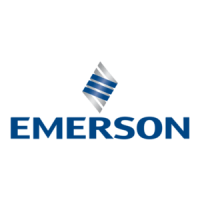
Do you have a question about the Emerson VERTIV Liebert Prop Fan PFH096A- L and is the answer not in the manual?
| Model | PFH096A- L |
|---|---|
| Category | Air Conditioner |
| Manufacturer | Emerson VERTIV Liebert |
| Type | Prop Fan |
| Airflow | 9600 CFM |
| Phase | 3 |
| Frequency | 60 Hz |
| Voltage | 460 VAC |
Explains the model number coding for self-contained air-cooled units.
Details the model number coding for split evaporator air-cooled units.
Explains model number codes for outdoor air-cooled prop fan condensing units.
Describes the model number nomenclature for self-contained water/glycol-cooled units.
Defines the model number nomenclature for chilled water units.
Details how the unit meets electronic equipment cooling needs from installation to operation.
Outlines features of self-contained systems designed for ceiling installation.
Describes the standard features of the air-cooled unit configuration.
Details standard features for water/glycol-cooled unit configurations.
Lists standard features for the chilled water unit type.
Covers standard features of the split-system evaporator section.
Describes standard features of the split-system outdoor condensing unit.
Explains the microprocessor control system and its interface.
Lists additional standard features available for system control.
Details various reheat options available for factory installation.
Describes available humidifier options and their functionality.
Lists optional sensor types and their functions.
Explains optional switch configurations for unit control.
Details the free-cooling option for enhanced efficiency.
Describes optional configurations for prop fan condensing units.
Outlines optional configurations for water/glycol-cooled units.
Covers optional configurations for chilled water units.
Describes accessories for system monitoring and control.
Provides general guidelines for unit installation.
Specifies requirements for room preparation before installation.
Details crucial factors for selecting the installation location.
Lists the weights of different unit models.
Instructions for inspecting equipment upon delivery.
Step-by-step guide for installing evaporator units in ceilings.
Explains how to handle evaporator air distribution during installation.
Covers piping requirements and coolant specifications for installation.
Details the installation process for the condensate pump kit.
Provides instructions for making electrical connections.
Guide for installing the centrifugal condenser fan.
Covers electrical and control wiring for the condenser fan.
Details ductwork requirements for the indoor condenser fan.
Instructions for installing outdoor air-cooled condensing units.
Guidelines for choosing the best location for outdoor units.
Details piping connection requirements for outdoor units.
Covers electrical connection procedures for outdoor units.
A final checklist to ensure all installation steps are completed correctly.
Introduces the microprocessor control interface and its keys.
Explains how to view and adjust temperature and humidity setpoints.
Describes how to monitor the unit's operational status.
Details how to view and manage active alarms.
Instructions for setting the unit's internal time and date.
Explains how to program night and weekend setback schedules.
Covers operations like restart delay and humidity control method.
Describes how to change system passwords for security.
Provides steps for calibrating temperature and humidity sensors.
Covers enabling/disabling alarms and setting time delays.
Details how to configure the common alarm relay.
Details how to set up custom alarm messages and text.
Explains how to run system diagnostics for troubleshooting.
Explains how the microprocessor controls cooling and heating cycles.
Details the unit's humidity control functions and modes.
Describes features managing compressor operation and preventing short cycling.
Outlines communication capabilities with monitoring products.
Provides definitions and troubleshooting steps for various unit alarms.
Explains the setup and function of custom alarms.
Details the high head pressure alarm and its causes.
Covers high and low humidity level alarms and their troubleshooting.
Explains high and low temperature alarms and their causes.
Describes alarms related to humidifier malfunctions.
Details the high-water alarm and how to clear it.
Explains the loss of power alarm and its indication.
Covers the short cycle alarm and potential causes.
Lists and describes optional alarms that can be configured.
Details the loss of water flow alarm and required setup.
Explains the smoke detection alarm and its function.
Outlines procedures for testing various system functions.
Describes testing of cooling, heating, humidification, and dehumidification.
Explains how to test the optional high-temperature sensor.
Details testing procedures for the smoke sensor.
Covers testing of remote shutdown capabilities.
Provides guidance on routine maintenance tasks.
Details inspection of the electric panel for loose connections.
Explains filter checking, replacement, and types.
Covers inspection of blower components and motors.
Outlines monthly inspection of refrigeration system components.
Provides instructions for replacing major components.
Details the process for replacing a compressor.
Addresses electrical failures leading to compressor burnout.
Guides users through troubleshooting steps for units that will not start.
Provides troubleshooting steps for units experiencing no cooling.
Addresses issues related to high compressor head pressure.
Guides troubleshooting for when the reheat function is not working.
Covers troubleshooting for frozen displays and unresponsive control pads.
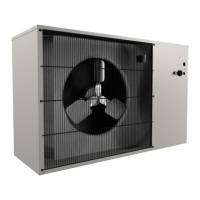

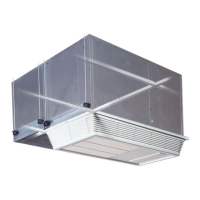

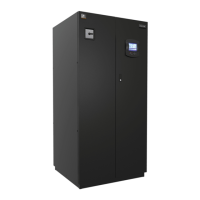
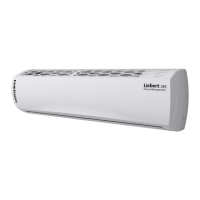
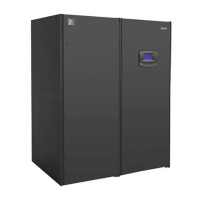

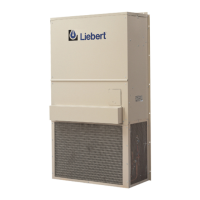
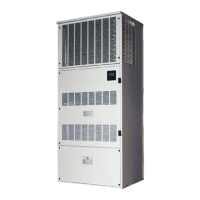

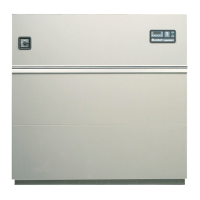
